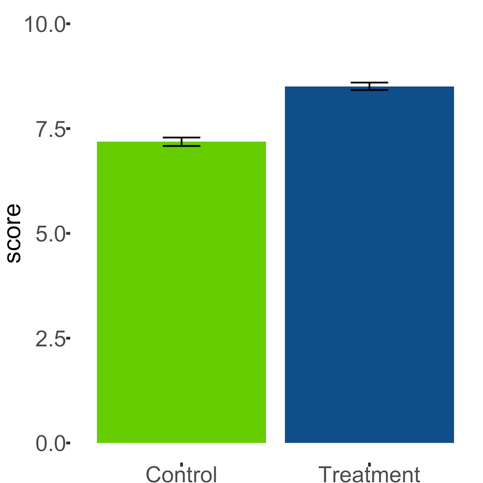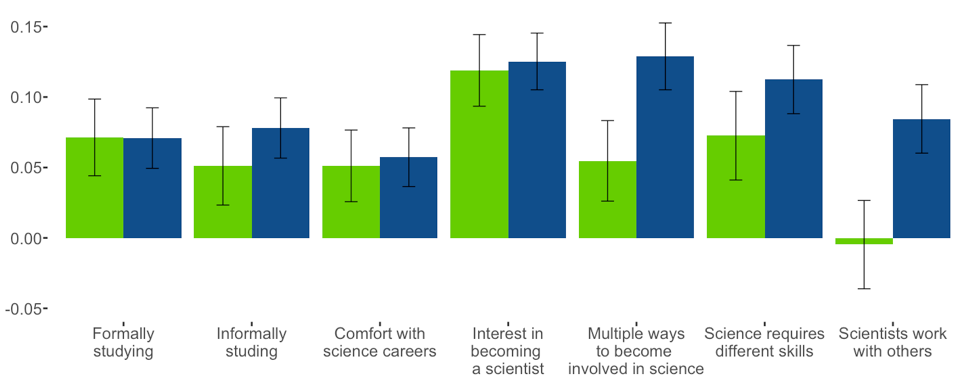High school science teacher participants receive professional development training

The SETI Institute’s Airborne Astronomy Ambassadors (AAA) program, funded by the NASA Science Mission Directorate , aims to measurably enhance student STEM learning and engagement in selected school districts. High school science teacher participants receive professional development training that includes research flights on NASA’s Stratospheric Observatory for Infrared Astronomy (SOFIA; Figure 1).
Central to the program is a 10-day curriculum module, developed by AAA program staff in 2017, that the teachers incorporate into their science courses. The module is aligned with national Next Generation Science Standards (NGSS) and focuses on the electromagnetic spectrum, a core component of high school physics and physical science curricula. The curriculum uses SOFIA research “case studies” as illustrative examples.
To measure the effectiveness of the AAA program, the SETI Institute contracted with WestEd, a non-profit education research agency, to perform a controlled experiment assessing both student content learning and STEM engagement during the 2017-18 school year. The WestEd “treatment group” consisted of 1,473 students who received the new curriculum module from AAA teachers who had already completed their professional development and STEM immersion experience on SOFIA. The control group consisted of 870 students who received ”business-as-usual” electromagnetic spectrum instruction from teachers who had not yet received AAA professional development nor flown on SOFIA.
The results of the WestEd study indicate that students in the treatment group clearly performed better on the content learning assessment (average score of 85.1%) than did students in the control group (71.9%). The difference is more than 10 standard errors (Figure 2). These results are both statistically significant and substantively meaningful; i.e., they meet significance and effect-size thresholds recommended by the U.S. Department of Education’s “What Works Clearinghouse.” This positive outcome was consistent for students of both genders and for students from under-represented minority groups versus those not from under-represented groups.
Students of AAA teachers were also surveyed on their attitudes towards STEM education and STEM careers. Results indicate that students in the treatment group felt they gained more from their course and showed a larger change in attitude from the beginning to the end of their course than did students in the control group (Figure 3). This change was largest for a question related to the collaborative nature of science (Figure 3, farthest right bars). Students also indicated a significantly greater understanding of the notion that there are multiple ways of becoming involved with science and that science careers require a wide range of skills.
“WestEd’s careful study shows that NASA’s AAA program significantly enhances student learning & STEM engagement,“ said Dr. Dana Backman, AAA Principal Investigator. “This enhancement is accomplished via a remarkable program of teacher professional development followed by delivery of a science curriculum to students that incorporates exciting real-world examples and phenomena from the SOFIA mission.”
The AAA program begins its ninth year this month. Participating teachers will receive both in-person and web-based professional development training before participating in flight weeks on SOFIA in the fall of 2019.


AAA is funded by NASA SMD NNX16AC51A





